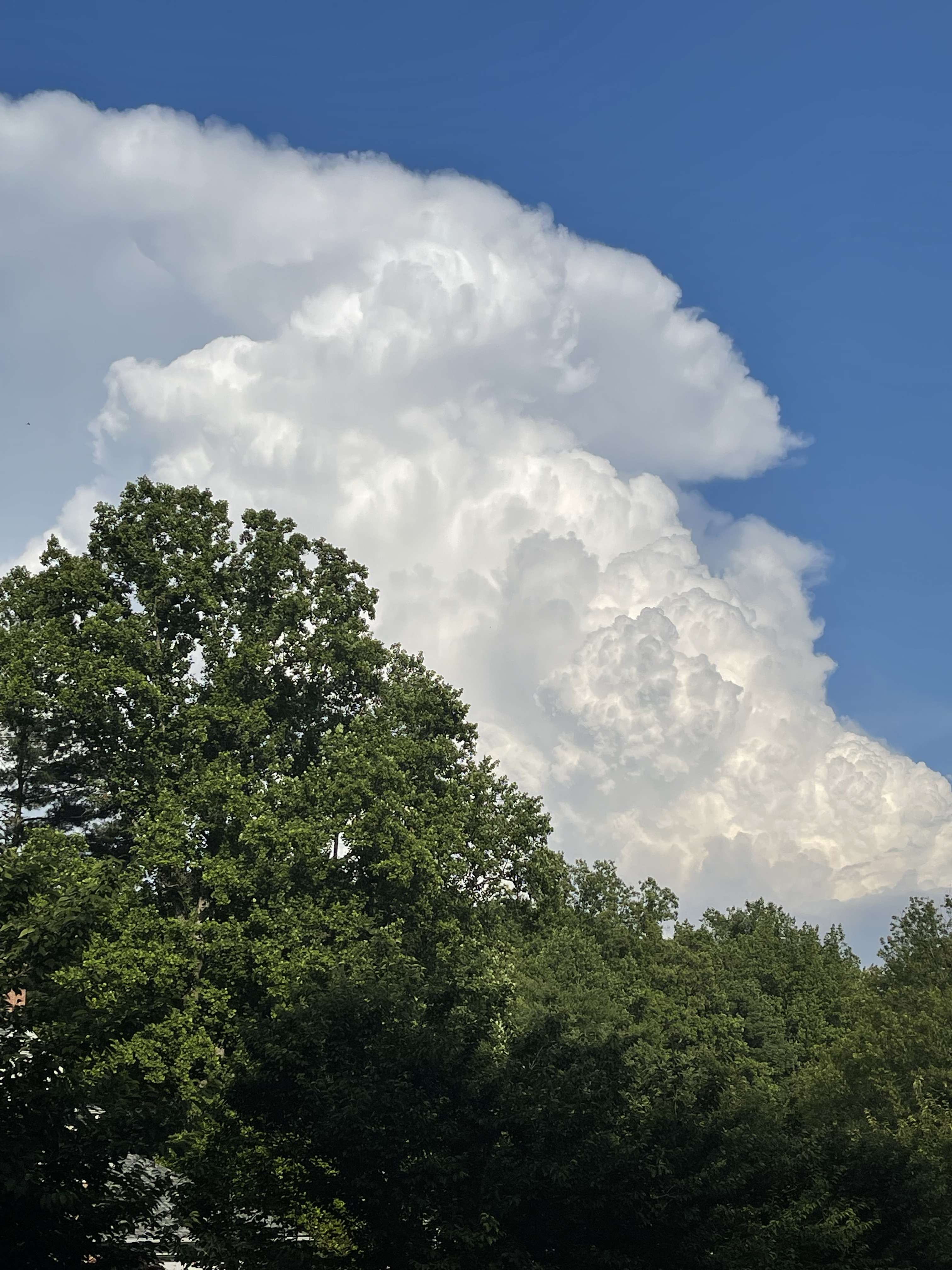-
Posts
44455 -
Joined
-
Last visited
-
Days Won
259
Everything posted by Phil
-
Well, the answer is no, the dewpoint doesn't have to be below 32F for frost to form. The frost-point is always higher than the dewpoint (stronger molecular bonding requires a higher temperature to complete a full break cycle at/below that threshold relative to surrounding H^2O molecules). This is why aircraft often accumulates ice when flying through thunderheads.
-
Well, it's the surfaces accreting frost that cool below 32F, not necessarily the air itself. That's why you don't usually see frost on cloudy nights (radiative exchange between the clouds/nucleated aerosols and the surface prevents the surface from cooling below the LTE threshold). This is also why you'll often see frost on open fields but not under trees, thanks to backradiation preventing the ground from radiating efficiently. If it were just the temperature cooling to the dewpoint below 32F, you'd have freezing fog, or just regular fog. There's a difference here. The dewpoint doesn't have to drop below 32F.
-
Yeah, I agree that we need some form of high latitude blocking this winter. I don't think it has to be a -AO, but a raging +AO/+EPO like last December won't work, obviously. Perhaps even a +EPO could work under a healthy -NAO/-PNA, neutral AO? Or a deep -EPO/-PNA/+NAO can work too, though that's more fragile I think, pattern wise...kinda hit & run, so to peak.
-
That's the monthly average, yes. The daily averages are here if you're interested: ftp://ftp.cpc.ncep.noaa.gov/cwlinks/norm.daily.pna.index.b500101.current.ascii There was a weak -PNA stretch the lasted 5 days. Less than one standard deviation below average..basically a non signal relative to the EPO/NAM.
-
Oh, 1942-43 also had a massive -NAO in January. Second strongest -NAO of any Niña winter, actually. The strongest -NAO winter of all time is 1959-60. Here's what it looked like, temperature wise: http://i724.photobucket.com/albums/ww243/phillywillie/Mobile%20Uploads/9F624EB5-F4A1-4A02-81AF-9894D0543A01_zpsargshgwb.png
-
Yeah, when juxtaposed with a -PNA, the -NAO can actually assist in keeping troughing in the west, as opposed to a January 2014 type deal. The prolonged +NAO in recent winters I think has been a contributing factor to the warmth in the western US, given that a +NAO constructively teleconnects with a +PNA, in most cases. Meanwhile, the -NAO stretch from 2008-2013 featured improved winters over the western US as a whole.
-
New Euro monthlies are a block party. December: Huge -NAO and -EPO blocks...they actually form a "ridge bridge" across the entire Arctic domain. Looks like a December version of October 2009, probably even more extreme, if anything. January: Crazy -NAO continues, however we lose the EPO, looks like a neutral EPO/PNA..not much of a signal either way in the western US. February: More classic Niña (-PNA/+EPO) overall, however that big -NAO continues unrelenting. Trough centered in the west. Talk about a crazy pattern.
-
I've spent the morning analyzing the NAM state from 10mb to 1000mb over the last few months, and I have to say, the current situation is quite peculiar for a -ENSO/+QBO year. Polar cap heights have been well above average since March, and though it's early, the PV looks to begin the cold season weaker than it has ever been for mid-October in a Niña/+QBO (during the satellite era), except for maybe 2009 which was a Niño/-QBO (hence weak early-winter PV is expected in that case). Looking back, I can only find a few years with even remotely similar stratospheric profiles under similar ENSO/QBO background states. One of these years is 1959/60, but this was a cold neutral/high solar year. There are a few other years, like 2010/11, that hold some similarity at/below 40mb, but nothing like 2016/17 so far.
-
Looks like DCA gusted to 42mph. So far I've got 27mph through the trees. Dewpoints dropping into the upper 30s and low 40s, perfect for a midday jog. I love downsloping days.
-
Currently 57.7/49 early this morning with a light drizzle falling intermittently. Can hear the breeze outside from in our bedroom. Probably hitting 30-35mph out of the north, but unfortunately my anemometer is blocked by pine trees from that direction, so the peak gust is only 20mph so far.


